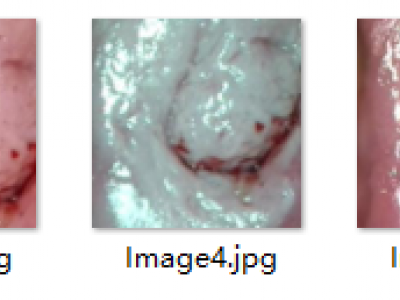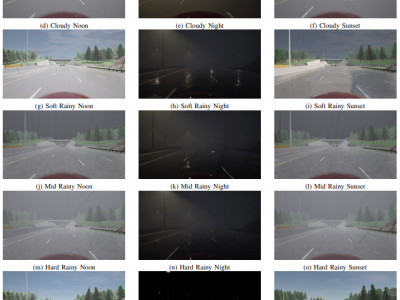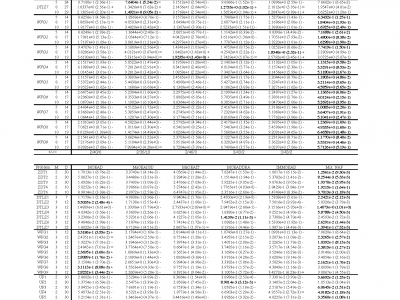Machine Learning

This dataset contains the online appendix of the paper titled "The effectiveness of hidden dependence metrics in bug prediction"
Abstract:
- Categories:
 76 Views
76 Views
The rapid evolution of wireless technology has led to the proliferation of small, low-power IoT devices, often constrained by traditional battery limitations, resulting in size, weight, and maintenance challenges. In response, ambient radio frequency (RF) energy harvesting has emerged as a promising solution to power IoT devices using RF energy from the environment. However, optimizing the placement of energy harvesters is crucial for maximizing energy reception. This paper employs machine learning (ML) techniques to predict areas with high power intensity for RF energy harvesting.
- Categories:
 405 Views
405 Views
These datasets are gathered from an array of four gas sensors to be used for the odor detection and recognition system. The smell inspector Kit IX-16 used to create the dataset. each of 4 sensor has 16 channels of readings. Odors of different 12 samples are taken from these six sensors
1- Natural Air
2- Fresh Onion
3- Fresh Garlic
4- Black Lemon
5- Tomato
6- Petrol
7- Gasoline
8- Coffee
9- Orange
10- Colonia Perfume
- Categories:
 394 Views
394 Views
These datasets are gathered from an array of six gas sensors to be used for the odor recognition system. The sensors those used to create the data set are; Df-NH3, MQ-136, MQ-135, MQ-8, MQ-4, and MQ-2.
odors of different 10 samples are taken from these six sensors
1- Natural Air
2- Fresh Onion
3- Fresh Garlic
4- Fresh Lemon
5- Tomato
6- Petrol
7- Gasoline
8- Coffee 1,2
9- Orange
10- Colonia Perfume
- Categories:
 573 Views
573 ViewsDataSet used in learning process of the traditional technique's operation, considering different devices and scenarios, perform the commutation through Pure ALOHA protocol, and make the device to operate with the best possible configuration.The control of energy consumption is essential for the operation of battery-operated systems, such as those used in IoT networks and sensors. The algorithms commonly employed for this purpose involve optimization functions with considerable complexity and rigorous control of the test environment.
- Categories:
 350 Views
350 ViewsSafety of the Intended Functionality (SOTIF) addresses sensor performance limitations and deep learning-based object detection insufficiencies to ensure the intended functionality of Automated Driving Systems (ADS). This paper presents a methodology examining the adaptability and performance evaluation of the 3D object detection methods on a LiDAR point cloud dataset generated by simulating a SOTIF-related Use Case.
- Categories:
 74 Views
74 ViewsThis is a test dataset for comparison with the latest multi-objective evolutionary algorithms. We have split the experiment into two groups in high and low dimensions respectively, and the experimental results are outstanding. We used IGD as the performance metric, and the data in parentheses are the std of 20 independent repetitions of the experiment and were analyzed for significance.
- Categories:
 67 Views
67 Views
This dataset accompanies a research paper on leveraging Machine Learning (ML) techniques for regression to predict the optimum DC bias in direct current in optical orthogonal frequency division multiplexing (DCO-OFDM). The dataset comprises a set of features to facilitate the prediction of the required DC bias to mitigate the impact of clipping distortion at the transmitter. MATLAB software was utilized for modelling the DCO-OFDM transmission and generating the research dataset.
- Categories:
 79 Views
79 Views
The Comprehensive Hindi Hostile Post Detection Dataset (CM-HTHPD) is collection of Twitter posts written in the Hindi language, focusing on various forms of hostile content. The dataset was gathered using the Twitter Developer API and subsequently annotated manually with sentiment labels using the Label Studio platform. The dataset is primarily aimed at facilitating research and analysis in the domain of hostile content detection and sentiment analysis in Hindi-language social media discourse. The size of the dataset is approx 8300.
- Categories:
 67 Views
67 Views
16.00
Normal
0
false
false
false
EN-GB
X-NONE
X-NONE
- Categories:
 289 Views
289 Views

